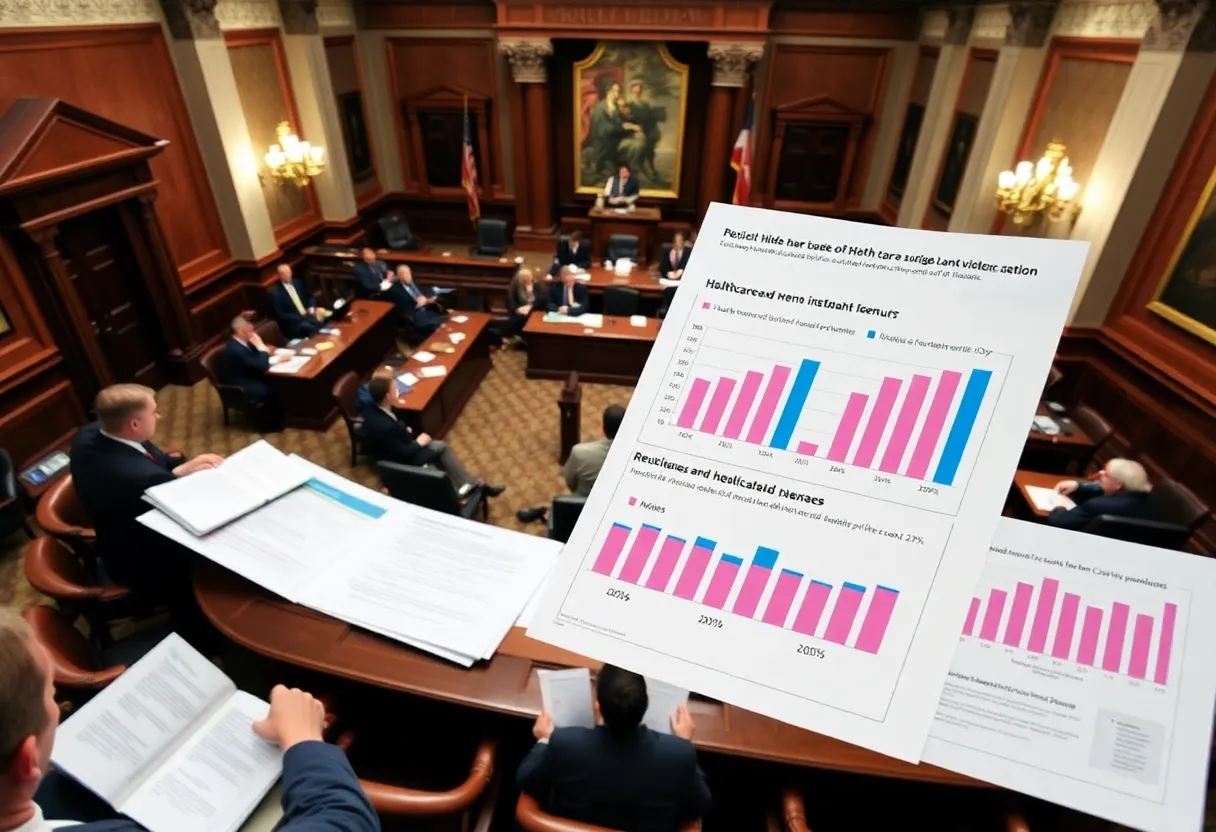News Summary
Pennsylvania legislators are in negotiations over a significant increase in Medicaid funding as costs rise due to an aging population. Governor Shapiro’s proposed budget includes a $2 billion increase to maintain essential programs. Concerns arise regarding potential cuts from the federal government and their impact on state budgets and services, particularly affecting vulnerable populations. As lawmakers face a projected $5.5 billion shortfall, the outcome of discussions will define Medicaid’s future and the health of millions of residents relying on it.
Pennsylvania lawmakers are currently in negotiations over Medicaid funding, with the state’s budget for the program exceeding $55 billion last year. This budget reflects a $19 billion contribution from the state, which now faces rising costs due to an aging and increasingly sicker population. As a result, Governor Josh Shapiro has proposed a substantial increase in state spending for the Department of Human Services, from $19 billion to over $21 billion, a 10% rise compared to the previous fiscal year. Authorities stress that a minimum of $2 billion is essential to keep Medicaid programs operational amid growing demands.
Health officials have pointed out the ongoing rise in annual Medicaid costs, which are fueled by the need for more at-home care for seniors and the increasing expense of medications. Notably, the state anticipates a $1.2 billion increase in spending on GLP-1 inhibitors alone this year. Medicaid remains the largest cost driver for Pennsylvania, accounting for a significant portion of its nearly $50 billion annual budget. With about 3 million residents enrolled, including 1.3 million children and a notable number of nursing home residents, the program is crucial for many Pennsylvanians. In Philadelphia, for instance, roughly 40% of the population relies on Medicaid services.
The state has recently resumed annual eligibility checks after suspending them during the COVID-19 pandemic. These checks have revealed that many older and sicker residents require increased care, further driving up costs. Lawmakers are working to strike a balance in budget negotiations, aiming to address a projected $5.5 billion shortfall in the upcoming fiscal year. The use of state reserves may be essential to accommodate new spending initiatives as negotiations progress behind closed doors ahead of the June 30 budget deadline.
Concerns among Republican lawmakers are mounting regarding the implications of fulfilling Shapiro’s request for increased Medicaid funding. They fear that such an increase may hinder investments in other state programs, potentially complicating the budget landscape even further. Additionally, proposals for new “guardrails” for the Medicaid program have emerged, which could include co-pays or limiting coverage for expensive medications primarily intended for weight loss, raising questions about the future support for vulnerable populations.
President Trump’s federal budget proposal, which suggests $880 billion in cuts to Medicaid over the next decade, has heightened concerns among state leaders. They worry about the potential impacts of these cuts on Pennsylvania’s ability to maintain coverage for residents in need. Proposed changes to eligibility rules may also lead to hundreds of thousands of residents losing their Medicaid coverage, which would increase financial strain on the state budget.
The income eligibility threshold for Medicaid eligibility stands at 138% of the federal poverty level, equating to an income of $21,597 for individuals. Health officials emphasize that without adequate federal support, the state may struggle to ensure continued access to Medicaid for all who require it, particularly as state costs escalate in the face of rising healthcare needs.
As budget discussions continue, the fate of Medicaid funding hangs in the balance. The outcome of these negotiations will not only determine the financial stability of Medicaid programs in Pennsylvania but also the health and welfare of millions relying on this essential support.
Deeper Dive: News & Info About This Topic
- Philadelphia Inquirer: Pennsylvania Medicaid Budget Negotiations
- Wikipedia: Medicaid
- Philadelphia Inquirer: Pennsylvania Medicaid Reform
- Google Search: Pennsylvania Medicaid
- Philadelphia Inquirer: Gubernatorial Candidates on Medicaid
- Google Scholar: Medicaid Funding Pennsylvania
- Philadelphia Inquirer: Changes in Medicaid Eligibility
- Encyclopedia Britannica: Health Care in the United States

Author: STAFF HERE PHILADELPHIA WRITER
The PHILADELPHIA STAFF WRITER represents the experienced team at HEREPhiladelphia.com, your go-to source for actionable local news and information in Philadelphia, Philadelphia County, and beyond. Specializing in "news you can use," we cover essential topics like product reviews for personal and business needs, local business directories, politics, real estate trends, neighborhood insights, and state news affecting the area—with deep expertise drawn from years of dedicated reporting and strong community input, including local press releases and business updates. We deliver top reporting on high-value events such as Mummers Parade, Philadelphia Flower Show, and Thanksgiving Day Parade. Our coverage extends to key organizations like the Greater Philadelphia Chamber of Commerce and United Way of Greater Philadelphia, plus leading businesses in telecommunications, food services, and healthcare that power the local economy such as Comcast, Aramark, and Children's Hospital of Philadelphia. As part of the broader HERE network, we provide comprehensive, credible insights into Pennsylvania's dynamic landscape.





